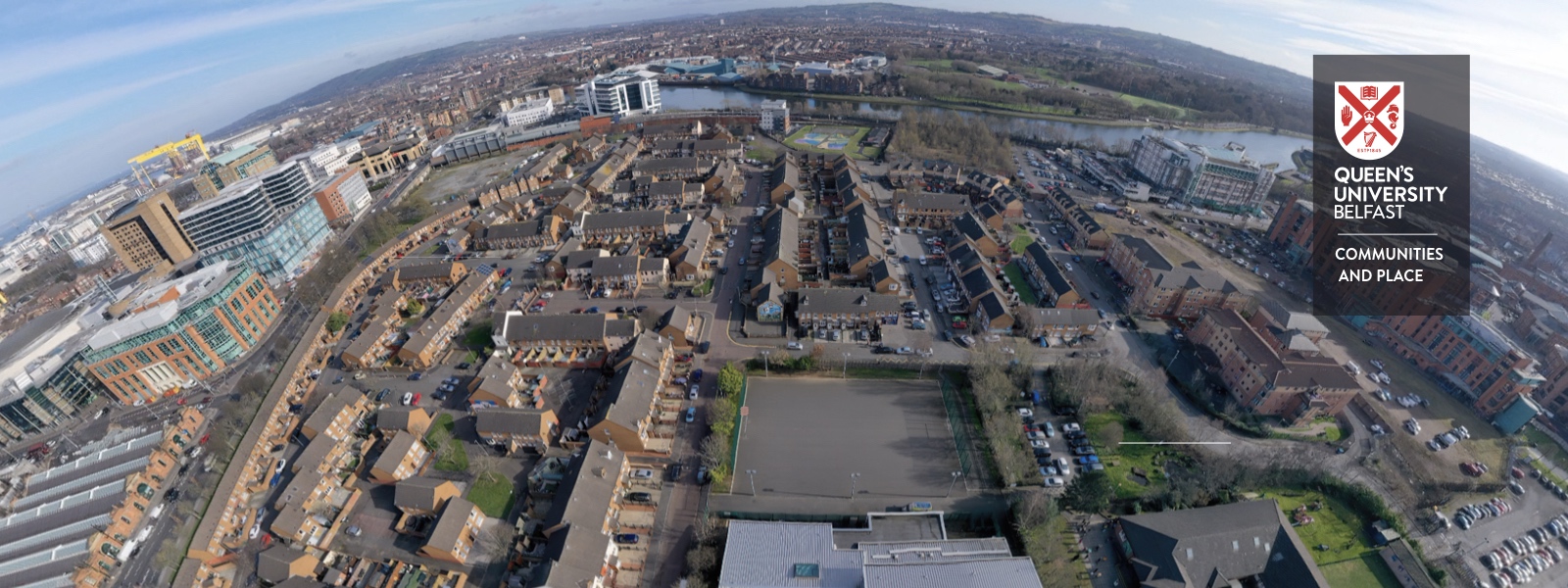Methodology
The Growing up in the Market (GUIM) study is a central engaged research mechanism allowing us to gather the lived experience of residents of the Market community. The qualitative longitudinal methodology was selected to examine transitions and trajectories over several years, allowing researcher to ‘walk alongside’ participants creating an in-depth picture of family life in this community (Neale and Flowerdew, 2003). As a longitudinal study, there is a keen focus on trajectories and following participants through key stages with a focus on health, educational and employment outcomes in order to explore the how and why of these areas which highlight inequalities (Amin 2022).
With this knowledge we designed GUIM as a cohort study to include children at different educational stages, points of key transition and their parents or guardians. These were;
- Year 7 pupils in primary schools
- Year 10 pupils in post primary schools
- Year 12 pupils in post primary schools
- Age 16 + into young adulthood
- Parents or Guardians
Research Question 1: How and why does community context impact attitudes, aspirations and outcomes in wellbeing, health, education and employment?
Research Question 2: How can the insights from the lived experience data be harnessed to co-produce targeted interventions supporting the community to address identified needs?
Sampling and Recruitment
Purposive sampling was used to select and recruit 61 participants from specific age cohorts living in the Market area which encompassed five key educational transition points. Recruitment commenced in March 2021, following ethical approval from the School of Social Science Education and Social work Research Ethics Committee (REC). An established relationship with our partner community organisation, The MDA, facilitated recruitment through their community engagement networks. Despite this partnership and the thank you vouchers being offered to participants initial recruitment was slow. We were alerted to community anxiety about university researchers conducting home interviews. We sought funding and engaged a local coordinator and a local administrator post to support the overall QCAP model and recruitment to the GUIM study. This subsequently transformed our approach and community perceptions. The addition of the local co-ordinator post within the QCAP model resonates strongly with evidence of what has worked well in other successful place-based initiatives (see Davies, 2019). We achieved the full sample by November 2021.
Data collection
Participants received information sheets and gave written informed consent with assurances of anonymity, confidentiality, and rights to withdraw. Semi-structured interviews were conducted using cohort-specific schedules covering perceptions of community, education, digital inclusion and mental health. Interviews lasted 30-60 minutes on average, with younger participants having shorter interviews. Most interviews occurred in participants' homes facilitated by the local coordinator introducing the researcher. Some interviews took place in the community centre to provide a neutral space. Younger cohorts were interviewed in a local youth club. Interviews were audio recorded and transcribed verbatim.
Field notes were kept throughout data collection reflecting on the process. These noted the challenges of multiple participants being present during interviews due to limited space in homes. While ideal to interview separately, sometimes maintaining participant comfort took priority over full privacy. Over time, familiarity with the area grew through community immersion during data collection. A humble, learning attitude was maintained throughout, recognising participation occurred through community goodwill.
Analysis
Verbatim transcripts were analysed using a hybrid approach of framework analysis and inductive thematic analysis in NVivo. An initial coding framework was created based on the interview schedule and research questions. Descriptive open codes were applied to transcripts, adding emergent themes. Two researchers independently coded with a third coding a subset for interrater reliability. The framework matrix enabled within-case reflection to inform case study analyses.
Deductive and inductive codes were analysed through a categoric aggregation process to identify themes and patterns. Four researchers engaged in regular analytical discussions throughout to debate insights and interrogate findings. Coding meetings aided collaborative and timely inter-coder checks. The framework matrix and NVivo coding iteratively informed each other.
Amin, A. (2022), ‘Communities, places and inequality: a reflection’, IFS Deaton Review of Inequalities, https://ifs.org.uk/inequality/communities-places-and-inequality-a-reflection
Davies, S. (2019) ‘Place-based approaches: Characteristics and learning.’ A New Direction. Available at: https://www.anewdirection.org.uk/
Neale, B. and Flowerdew, J. (2003), ‘Time, texture and childhood: the contours of longitudinal qualitative research’, International Journal of Social Research Methodology, 6: 3, 189–99

